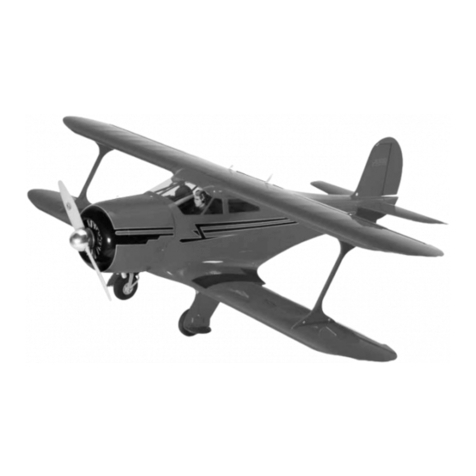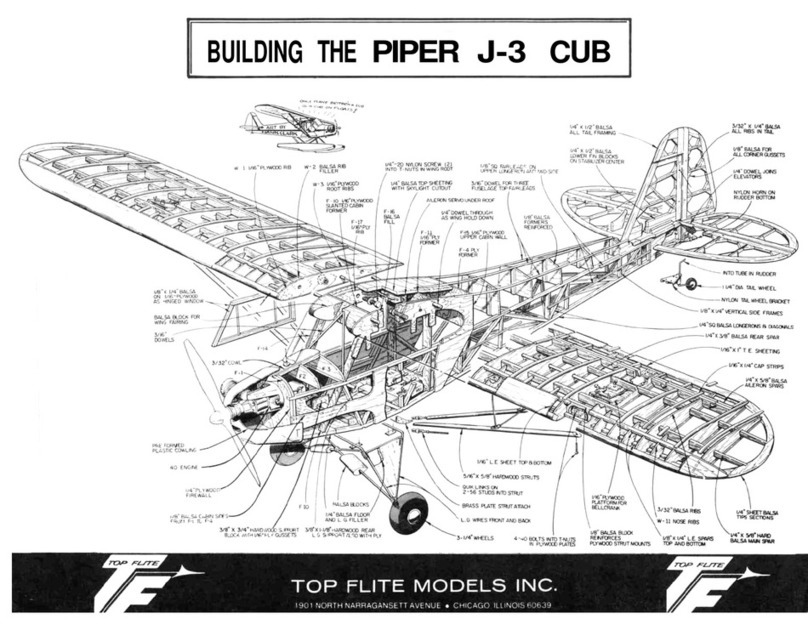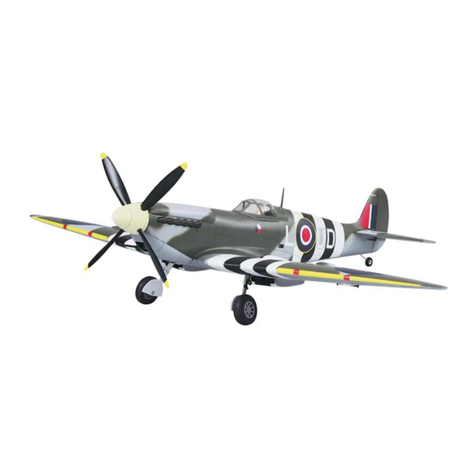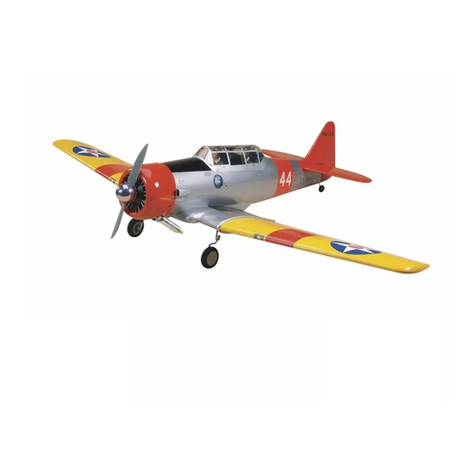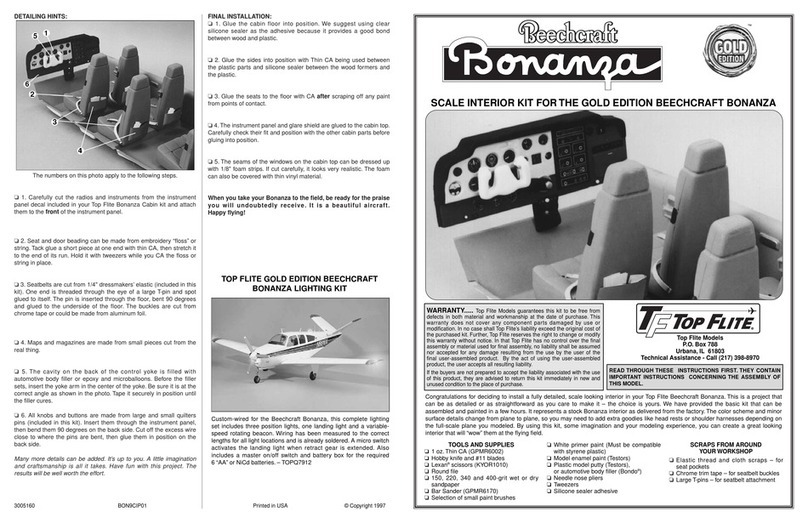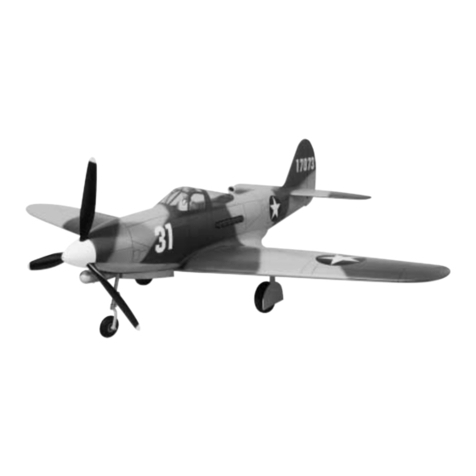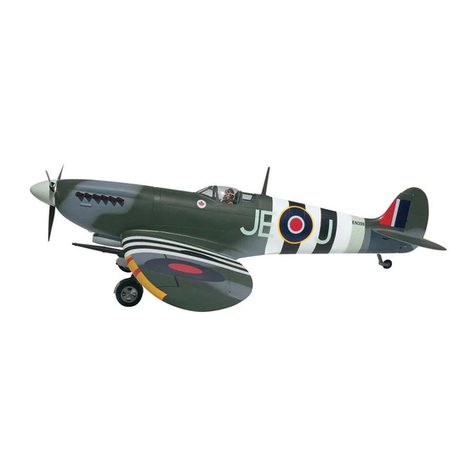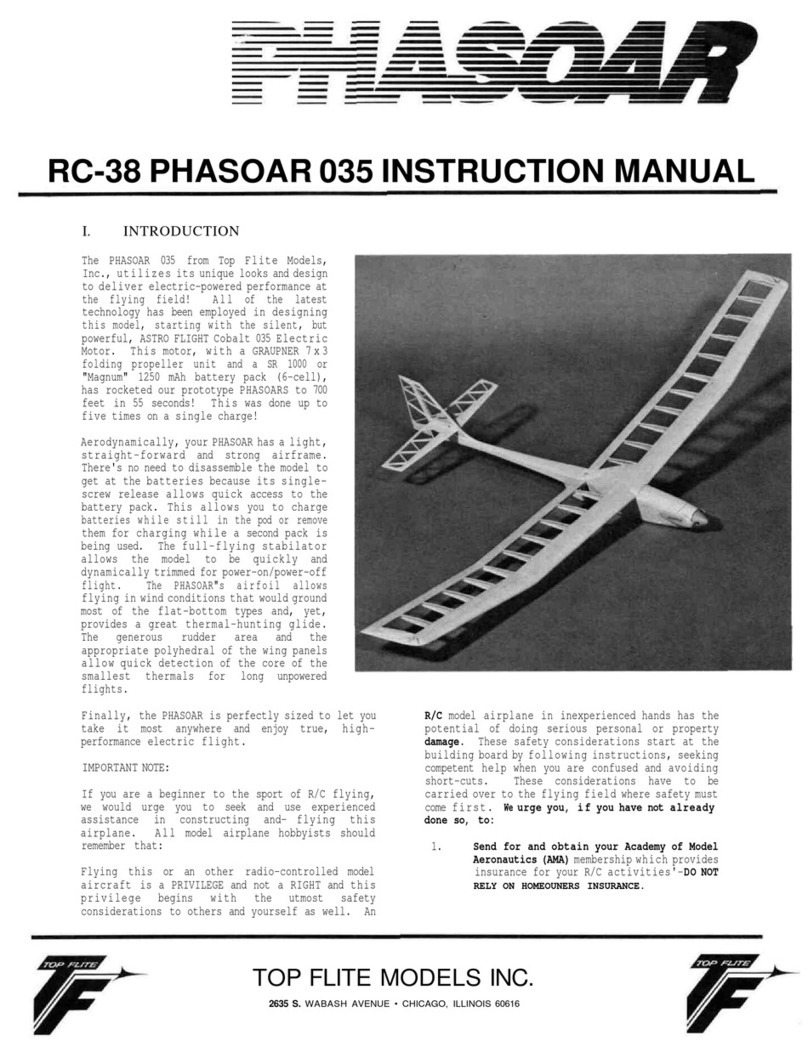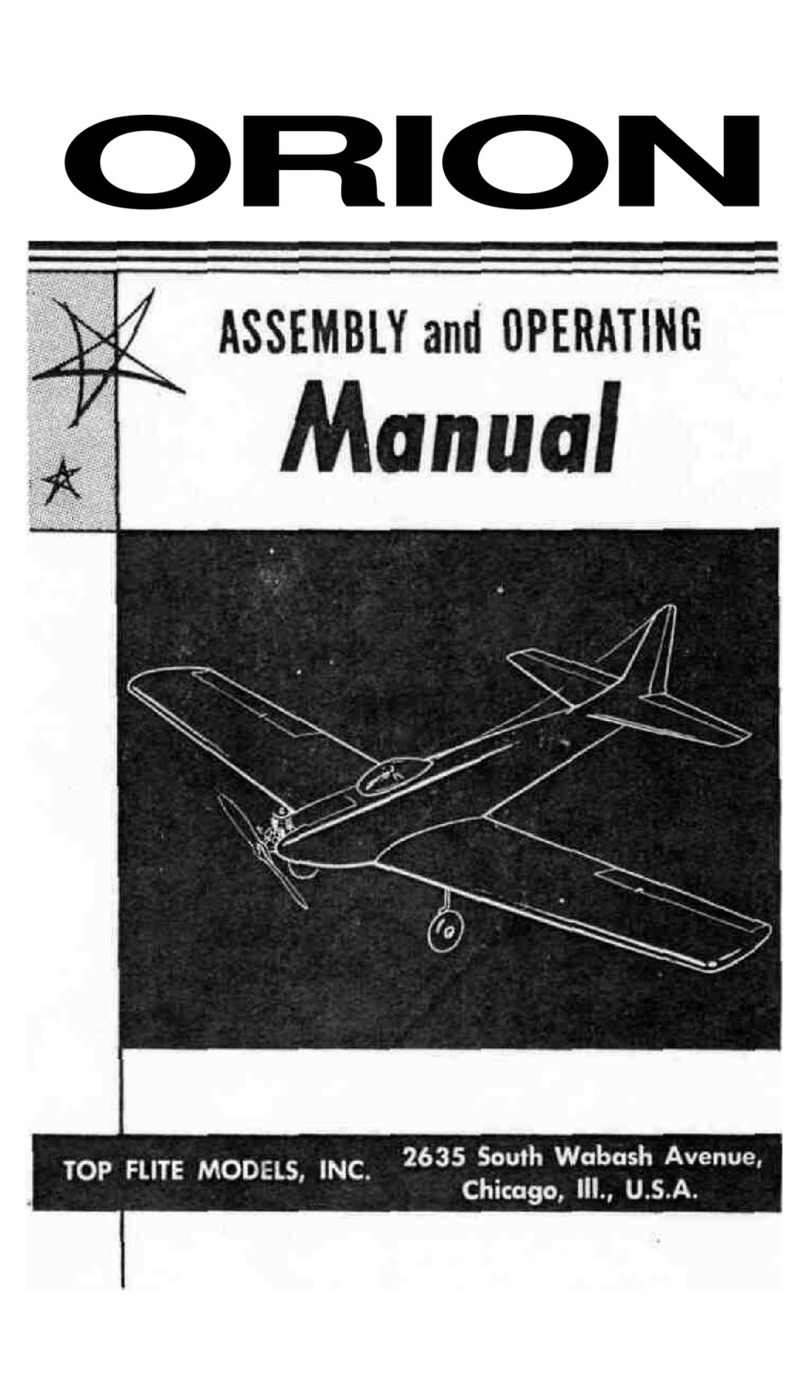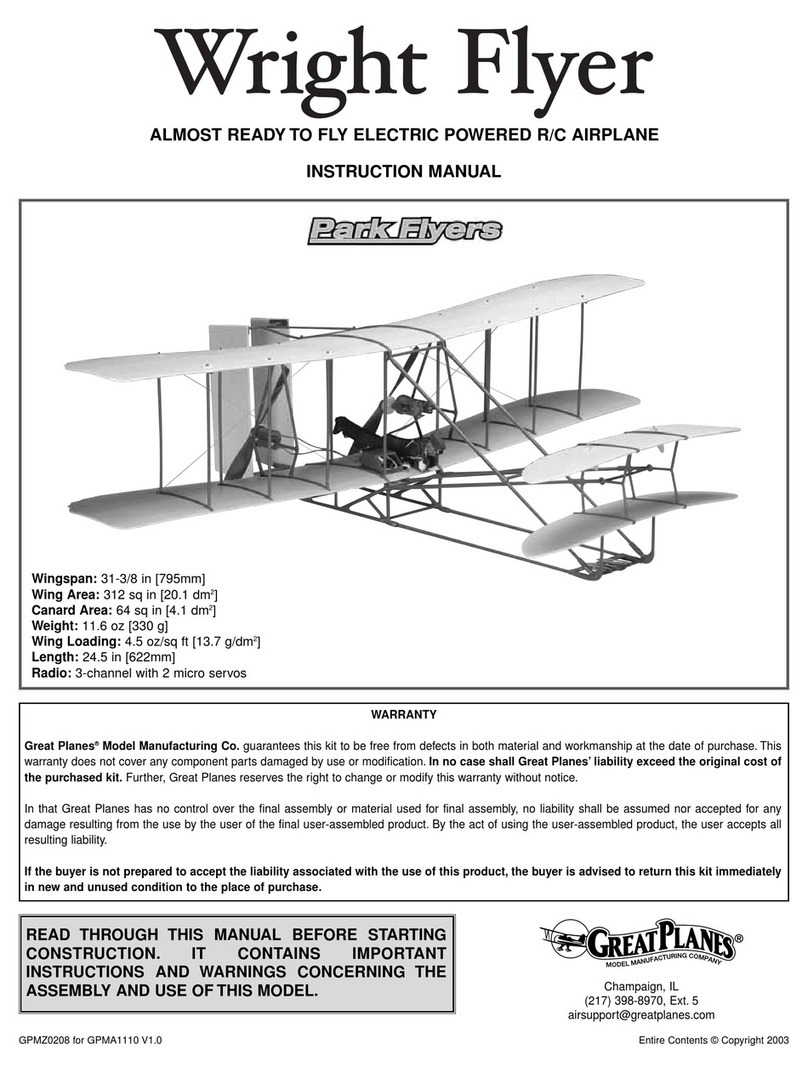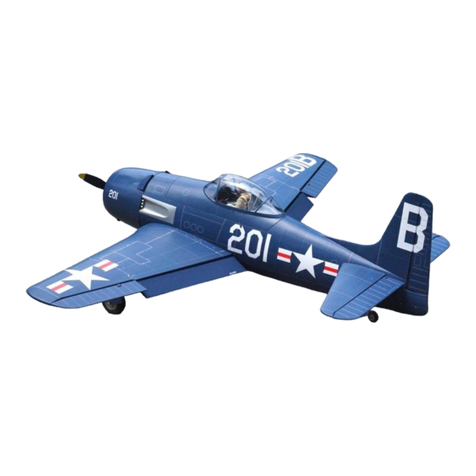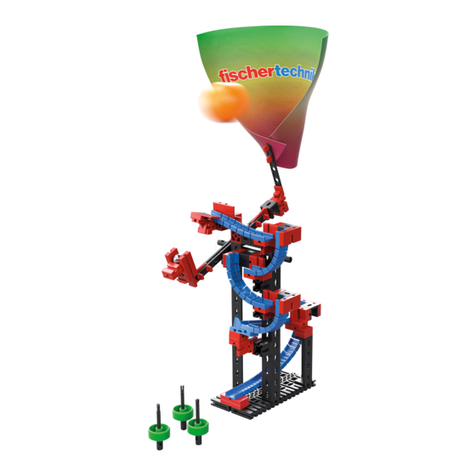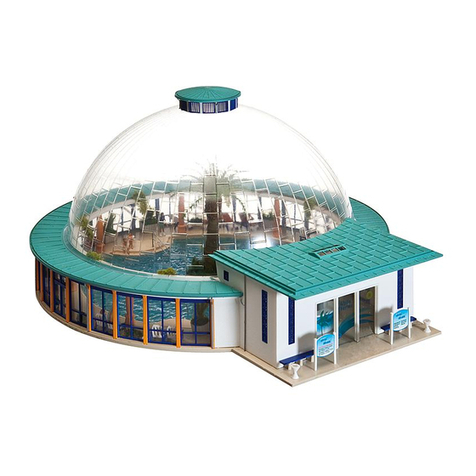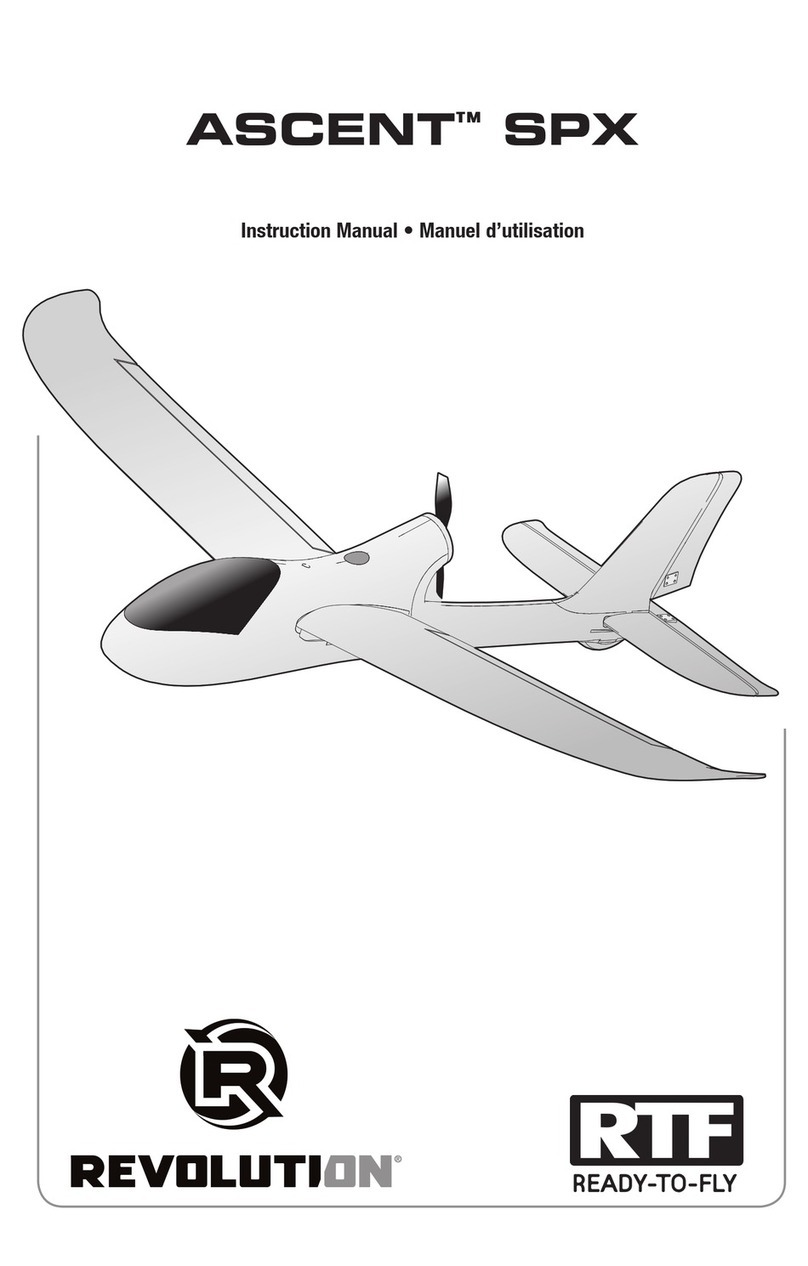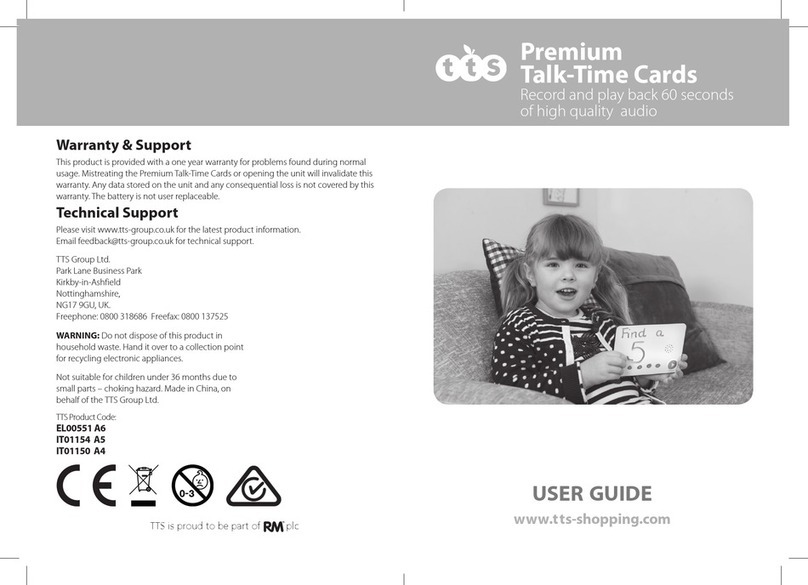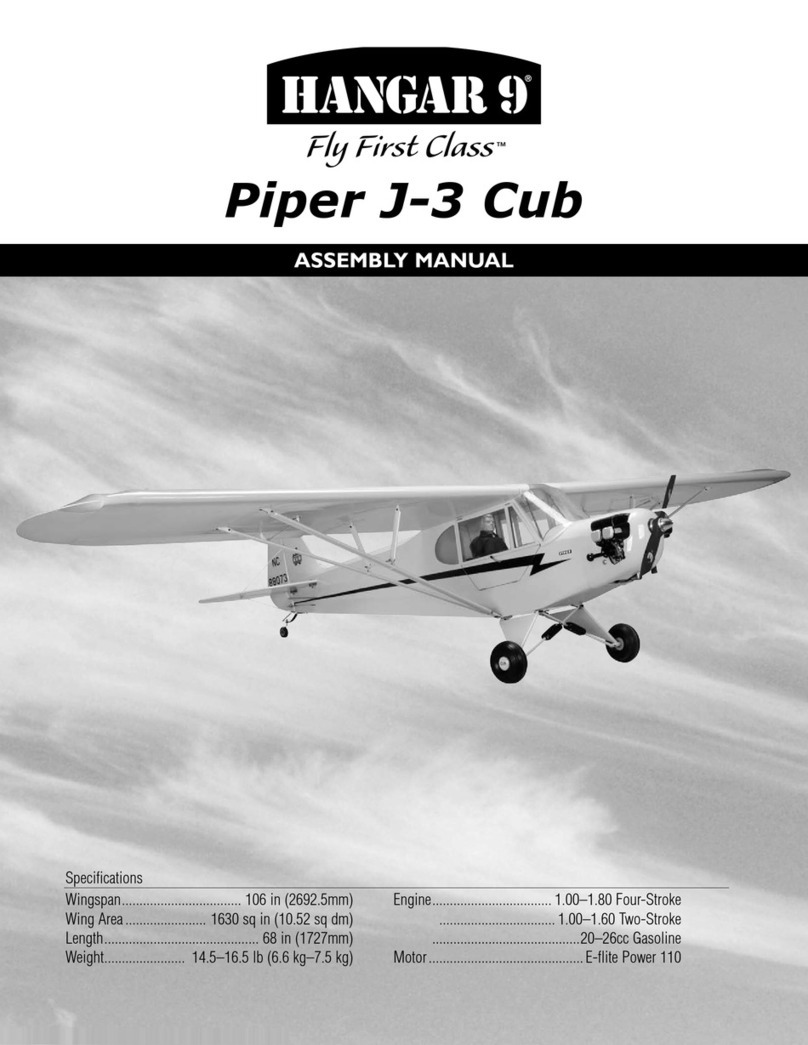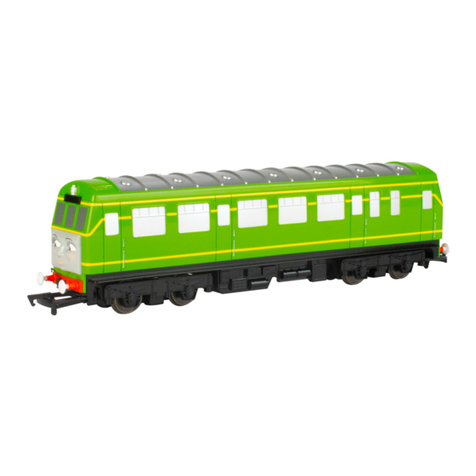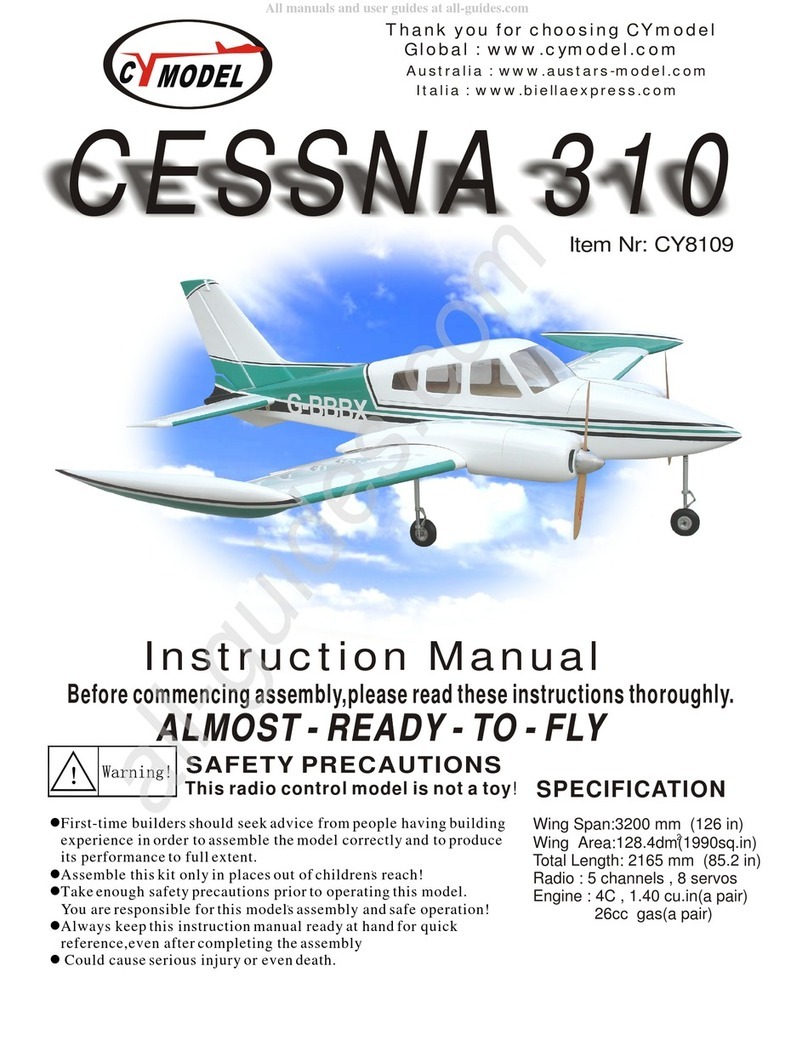inplace inpre-drilled holes.
16.Althoughwe have been instructingyou to sand the
variouscomponents of your Elderas you were con-
structingthem, take the timeto now re-check
everythingthatmayrequirefinaltouch-upand/orfill-
ing.Thedifferencebetweenagoodcoveringjoband
agreat one tends tobe about $2.00 worthof sand-
paperandthe willingness to useit.
COVERING & FINISH
Now that all of the variouscomponents of yourElderare
completely assembled and sanded totheirfinalshapes,
you can turn your attentionto covering. This is the point
that can separate your model fromanyone else's. You
must decide whatyou wantthe finishedairplaneto look
like.Wehavefinishedourprototypesinawidevarietyof
color schemes representing everythingfroman R.A.F.
WWIfighter(increamMonokotewithred,whiteandblue
Roundels and tailtreatment) or a German WWI fighter
(allred Monokote withblack Iron Cross's on a white
background) to civilian-typeversions (dove gray
fuselages, transparentblue wingsand tail-groupand
chrome Monokote "cowls")!Interestingly,nomatter
whatcolorschemewe used, there wasalwaysagroupof
people at the flyingsite who wouldstand there looking
attheElder,arguing about what real, full-scaleaircraftit
represented. Just remember that the Elderis not a scale
model, you'refreeto cover itinany configurationthat
strikes your fancy—itwilllook great!
Before covering, itis suggested that the final finish be
applied to the open sprucefuselagestructure.This can
bedone several ways. There is a very good product on
the market called Varathane that is sold through most
well-stockedhardware and lumber supply outlets.This
material isessentially clear and willleave the spruce
about its same color, maybe a littledarker, and
somewhat shiny. Itis resistant to spent fueland quite
durable inactual use. Epoxy paint, mixed to achieve a
woodish brown color and brushed or sprayed, also
workswell.Take yourtimehere, use light sandpaper to
goovertheframework,smoothingitforthefinishofyour
choice. When applying thefinish,be sure that all of the
exposed wood, except thetop, rear stab glueing area,
receives paint. We then used flatblack paint (again,
epoxy isgreat) to paint each of the ply "joint-caps." This
really makes the structurecome to life!
Now forthe coveringitself.Use thedirections that are
supplied witheach roll of Monokote and cover each of
the various components separately; fuselage, wings,
stab,elevators,finand rudder.Someofyoumighthavea
problem withthe wingtipsoftheElder,ifthisis yourfirst
ventureinto the use of Monokote or your firstR/C
airplane. Here's a method thatworksquite well.First,
cover thewing panels totally,starting withthe bottoms
first,including the wingtips.Then cover the tops of the
wingpanels out to and including the last outboard W-3
wing rib, but not thewingtipsthemselves. Next,cut an
elongated triangular piece of Monokote to fitover the
spacebetween theforwardW-3 ribandtheforwardW-7
wingtipformer—keepthe edges straight,allow about
1/8"overlapand iron thispiece inplace. Movenowtothe
next exposed triangulararea between W-7and W-8and
repeat theprocess. This method willprovide a much
easiercoveringsituationforthenewcomerand, ifdone
carefully,givesyouanicelooking,wrinkle-freewingtip.
When coveringthe fuselagebe sure thatthe bottom
covering—thepiece thatyoushould apply
first—overlapsinto and on the firewallby about 1/4" at
least.
Assumingthattheairplane is nowcovered, turnyourat-
tentionto fuel-proofingthe engine compartment. We
like touse and highly recommend a liberal coat of
polyester resin. Coat inside the cowl and fuel tank areas and over all of
theMonokote seams thatterminateinthecowlitself.
Thissealsthewood as wellas the Monokoteseams and
avoids"fuelcreep" lateron. Besuretokeepthe resin out
of
the bolt holes inthefirewall.
Useyour X-acto knife to nowclear-out allof the hinge
slotsintheailerons, wingand tailgroup. Dothe same
thingforthewinghold-down bolt holes, the cockpit,the
landing gear screwholes, etc.
Mount the wing to the fuselagewiththenylon bolts.
Placethe stab in positionon thetop rearofthefuselage
and sight down the frontof the model to observe ifthe
stab issittingflatinrelationshiptothewing,withoutany
tilt.Once satisfied,hold the stab firmlyinplace in the
position thatit ismeant to be;square withthefuselage
and aligned correctlywiththewingwhen viewedfrom
the top—makesure that itis exactlywhere you want it.
Use a sharp pencil and, whileholding the stab in place,
tracethe outline of theframeworkthat is incontactwith
the bottom of thestab onto thestab itself.Remove the
stab fromthe fuselage.Use your X-actoknifeto now
lightlycut-out theframeoutlinefromthe bottom of the
stab's Monokote to expose thewood—thiswillbeyour
glueing surface.The stab can now bemounted to the
fuselage;we used a "thick"CA adhesive forthis.
Next,preparethe finformounting tothestab bymaking
sure that all coveringis removed fromthe bottom of it,
leaving exposed wood. Besure that thecoveringon the
top of the stab is well-adhered to the centerS-3's
becauseyou willberemovingsomeof it, at thecenter,to
accommodate the fin.Use your X-actoknifetoremove
the coveringfromthe finslot location, exposing the
wood. Before glueing the finto the stab, use a pin to
make lotsofsmall holes intheexposed wood of both the
stab and finbottom, these need not bedeep. Use a
slower dryingadhesive (Titebond, 1-hour epoxy, etc.) to
nowgluethefinin placeonthestab. Usea length oflight
tape overthe topof thefinand on each tipof the stab to
hold thefininplace, at right angles, and allowtodry.
Check periodically whilethisstructureisdryingto be
sure that the finhas not shiftedand isin place at right
angles to the stab and on the centerlineof the fuselage;
we want everything "square." When this structureis dry,
removethe tape. Thread a length of 20#fishingline (us-
ed forriggingthru-out,ifdesired) through theholeatthe
top of the finand glue each end of the line into the holes
at each tipof thestab—carefullyapplied "thick"CA
12















